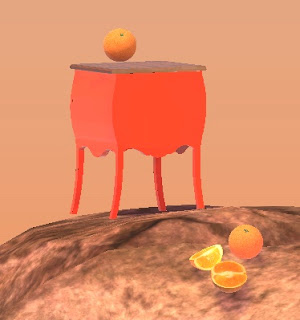Movement 2
One of my past lives is in architecture. I went to school at UC Berkeley for an M. Arch., finished up a year and found out it wasn't for me. That's a polite way of saying I think architecture education is a cynical, medieval, unhappy, "suffer for art" self-destructive practice and I couldn't hack it after a classmate committed suicide, but that's a story for a different time.
I think what draws me to level design over architecture is the exaggerated or unrealistic movement that's possible in video games. In any given game, you might fly, jump twice your height, swing across chasms, teleport, and climb up sheer vertical surfaces. Video games allow you to explore space in a much more dynamic way than your everyday existence would allow.
Adapting a real-life space to a video game world always involves some pushing and pulling of the dimensions and details to accommodate unrealistic movement. I’ve found this to be the case as I'm developing a grappling hook mechanic in a level modeled after the Maunsell Sea Forts.
The Sea Forts are pretty strange, not so much for their inception but for their lifetime afterward. They were created during WWII by the British military to defend against air invasion. When they were de-comissioned, the British just left them floating in the sea. The forts became home to squatters, pirate radio stations, and a place that declared itself “The Principality of Sealand.”
I’m using the forts as a test level for some kind of post-war game world, where the forts were used to house secret plans. I initially drew the layout accurately, but immediately increased the level scale relative to the real-world corollary. If the level is going to accommodate the kind of high-flying feeling that I was going for, it was going to need to feel bigger than it was.
I’m using the forts as a test level for some kind of post-war game world, where the forts were used to house secret plans. I initially drew the layout accurately, but immediately increased the level scale relative to the real-world corollary. If the level is going to accommodate the kind of high-flying feeling that I was going for, it was going to need to feel bigger than it was.
I chose swinging as the primary mechanic because of the implied vertical traversal that it makes possible. Swinging is more exciting to me than flying - flying is a complete defiance of gravity whereas swinging manipulates it, preserving the danger of falling, and possibly leading to some cool emergent techniques.
I’ve been finding that advanced movement mechanics can reconfigure the hierarchy of spaces in a level. In my case, the central tower is initially the most important, due to it’s position and scale. Players initially spend more time then necessary exploring this space. Once the player obtains the grappling hook, the central tower is less interesting to them, so they quickly pass it by.
It’s maybe a trivial observation, but one that can affect the rhythm of gameplay in levels where the player gains a power midway through, and especially when trying to work with an economy of space or assets. You need to design the space for both Spiderman and Peter Parker, and pay attention to how their perspective on their environment changes with their newfound power.


Comments
Post a Comment